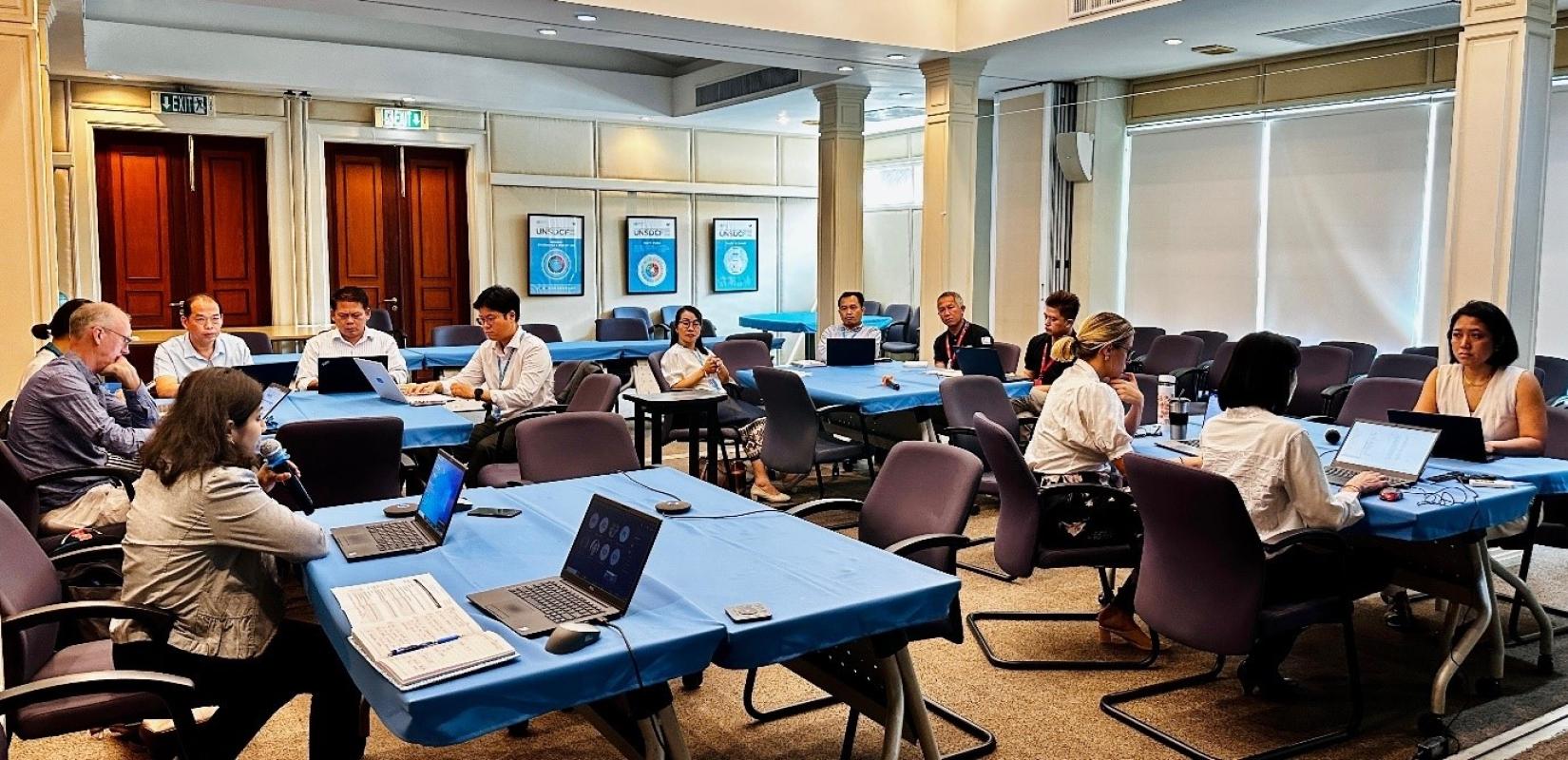Lessons and value of joint planning in Lao PDR

Joint Workplanning in Action:
As is the case in so many parts of the world, Lao PDR is highly exposed to rapidly increasing climate and disaster risks. These risks have enormous and varied implications, including frequent floods threatening 39.7% of the population1, and droughts disrupting livelihoods of more than 50% of workers in the agricultural sector2. But the availability of sufficiently detailed climate risk vulnerability data covering all 18 provinces and 148 districts remains a major challenge, substantially limiting ability to plan and prepare.
In response to this clear and pressing need, in 2024 six UN agencies working in Lao PDR prioritised plans for climate risk vulnerability assessments (CRVAs) to help close this data gap.
So far, so familiar.
However, what is different about 2024 is that under the new generation Cooperation Framework, increasingly integrated joint workplanning processes have been put in place and are starting to drive changes in how the UN plans as system, rather than only as separate entities.
And it was during this joint planning, in particular the discussions in the Results Group on “Environment, Climate Change and Resilience” (co-chaired by FAO and UNEP), that the connections between the different initiatives planned first became apparent across agencies.
And with this early identification of plans, came the ability to take early action to coordinate.
Crucially, identifying this common priority at this stage- before any of the work actually started- enabled agencies involved to better coordinate their assessments for greater overall coherence and efficiency, while reducing the burden on key Government counterparts.
Whilst there were similarities between the different initiatives, each of the planned CRVA’s was distinct, prioritising different issues in line with agencies’ respective mandates (e.g., risks to different sectors, or segments of the population). By recognising this, we could set about working to minimize overlaps and maximise the novel contribution of each to improve the quality and quantity of information available to decision makers.
Following a discussion on this initially within the UN Country Team, and later including Government counterparts during a Joint Steering Committee meeting, the discussion related to CRVAs has now shifted to technical level.
Relevant agencies’ focal points are exploring ways to harmonise data collected from the different studies, and to empower the Government as the coordinating owner of data generated. Different options for a shared public-facing CRVA data platform are being explored, and the Monitoring, Evaluation and Learning Group (MELG) is engaging on how the data can be most effectively shared and used.
So what can we learn from this?
Joint workplanning exercises can often be met with a degree of scepticism about whether the time investment is really worth it, beyond the detailed planning that individual entities already do.
But without this joint workplanning process, each agency would not have been aware of potential connections between their CRVA plans, and we could have been left with -at best- an after-the-fact attempt to reconcile and integrate conclusions.
Instead, we are seeing increasing evidence of how these substantive annual discussions and joint prioritisation exercises can increase coherence and overall impact of programmes, reduce the burden on key Government institutions through more concentrated and effective partnerships.
But we also believe that we can go further.
While the 2024 joint work planning process helped identify common priorities around which collaboration is being strengthened, agencies’ projects and programmes for the year were largely agreed upon already internally to each agency, and with respective donors, when joint workplan discussions took place, limiting the scope for in-depth revisions of agencies’ plans.
Tackling the next frontier, the UNCT in Lao PDR is now considering revising its annual planning cycle. While individual agency planning is currently undertaken prior to country-level JWPs, the new vision for the UNCT planning cycle in Lao PDR would include initiating joint workplanning earlier so to take place in parallel with and informing agencies’ respective planning processes. This proposal will be discussed in detail at a UNCT retreat later this year.
Through the reformed approaches to UN programming under the Cooperation Framework, we are already seeing how systems are being put in place to identify, discuss, and act on information as a UN country team much faster.
But as the reform beds in, there is so much more we can do.


